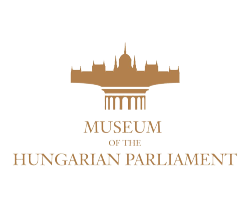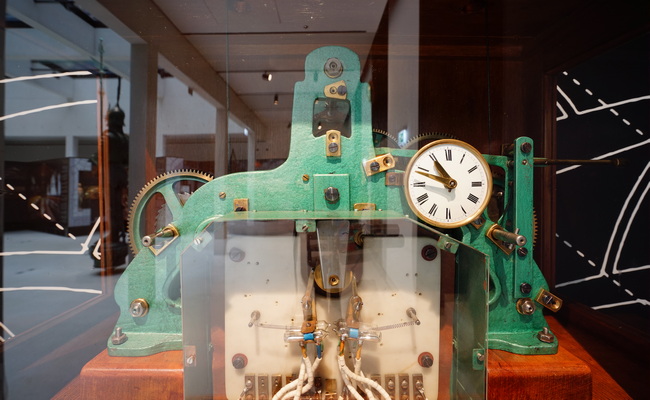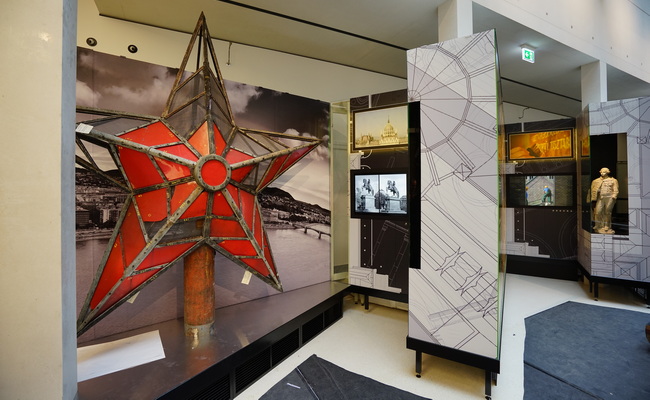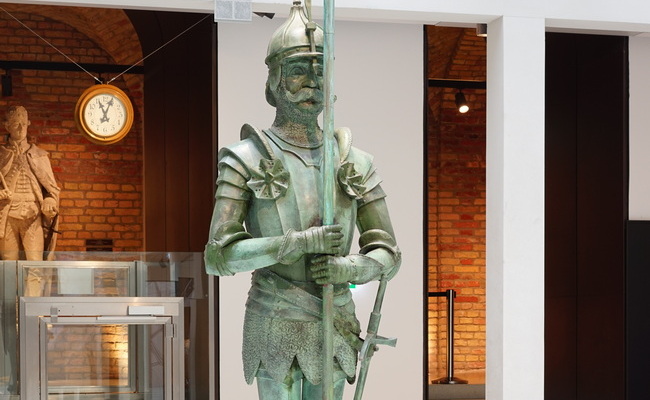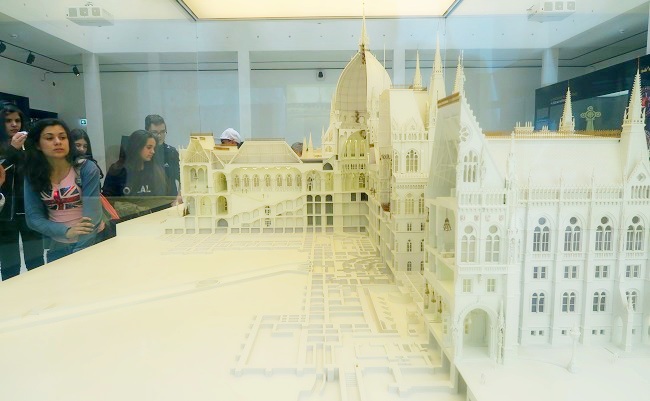Valiant Soldiers In Copper
Valiant Soldiers In Copper
The façades of the Parliament building are decorated with a total of ninety-four full-length human depictions, of which only four are not made out of stone: these four copper statues of valiant soldiers with no defined identities are positioned on the highest point of the building. Although the 38-metre-high tops of the Neo-gothic towers closing the two sides of the central section of the façade facing the Danube are dwarfed by the full height of the dome, the two copper warriors mounted here still look down at the Danube and Buda stretching below their feet from a dizzying height. The other two valiant soldiers on the respective pediments of the northern and southern façades also stand on the highest points. This is why they have modestly been dubbed the pediment and tower endings in the album published on the Parliament building and edited by Béla Pilisi Neӱ. However, these copper figures are sculpted with the same craftsmanship as the other ninety works; moreover, they protect the building from lightning.
The copper sculptures were for a long time regarded as works by the renowned Gyula Jungfer (Pest, 1841 – Budapest, 1908), who made the building’s wrought-iron decorations. However, recent research using contemporary documents preserved in the Parliament has demonstrated that they were made by a tinplate company founded by Mátyás Zellerin (Sopron, 1831 – Budapest, 1893) in 1894, when they had to be hoisted up to their place on the façade because the scaffolding was soon to be dismantled. The statues were assembled from embossed copper plates. Their application is mainly linked to the building’s style. The original piece, exhibited here, came from the southern tower of the Danube façade, from where it was removed during the reconstruction project in the 1990s and after more than a hundred years of decorating the Parliament building it was replaced by a newer replica modelled after it in the minutest detail.
orszaghaz_tortenete_jobb_rezvitez
|
The exhibition is open to visitors with a ticket for a guided tour of the Parliament building; it can be viewed in the Béla Neÿ Hall as the last stop of the tour.
PURCHASE TICKETS |


